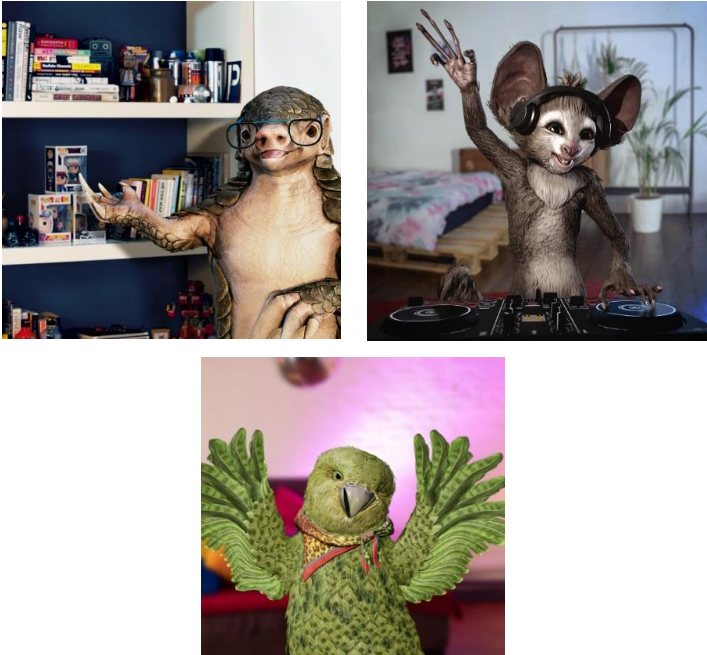Trends in Digital Marketing for Biodiversity Conservation
EDITORIAL

The COVID-19 pandemic has kept millions of people in many countries confined to their homes for months, a limitation that has obviously had a big impact on our ability to access nature (
Mobile games
Digital games have become a dominant form of entertainment, with those played on mobile devices (i.e., smartphones or tablets) expected to be the leading market segment in the next decade (
There are, however, indications that this is changing, with recent impact evaluations uncovering encouraging effects (e.g.,
In terms of game design, advances in hardware are likely to increase accessibility of games that use augmented and virtual reality, potentially allowing users to experience biodiversity in a realistic fashion without having to leave their homes. Yet, there is a lack of understanding around the cost-effectiveness of these experiences in the context of biodiversity conservation, particularly due to their substantial development cost.
Social media advertising
Digital channels will soon dominate advertising, with the last decade seeing a tremendous growth in this field (
Virtual influencers
The rise of influencer marketing, which focuses on individuals with a substantial online following (often on social media) who promote products and brands, has changed the way businesses communicate with consumers (
Although most virtual influencers to date have been human in appearance, this is a potential new avenue that could be explored by those aiming to promote the conservation of biodiversity. In the United Kingdom, for instance, On the Edge Conservation launched three virtual animal influencers last year with the goal of getting more attention for some of the most unique, endangered, and overlooked species on the planet (Figure 1).

Figura 1. Influenciadores virtuales -Eric (parte superior izquierda), Lexi (parte superior derecha) y Tegan (parte inferior)- diseñados por On the Edge Conservation para promover comportamientos proambientales
Source: https://www.ontheedge.org/
Virtual influencers have the distinct advantage of giving their creators full control over their messaging and actions. Yet, the potential for these messengers to be perceived as inauthentic has been highlighted as an important challenge (
Where next?
The use of digital marketing tools will only increase as the world’s population, together with the economy, increasingly moves online. Even though none of these tools are silver bullets, the current biodiversity crisis suggests that they should be closely examined and evaluated to provide an understanding of their true potential. Digital is the future and any messages worth communicating need to have a strong presence in this space if they are to fulfill their goals.
References
- arrow_upward Annetta, L. A. (2010) The “I's” have it: A framework for serious educational game design. Review of General Psychology, v. 14, n. 2, 105-113. https://doi.org/10.1037/a0018985
- arrow_upward Boyle, E. A., Hainey, T., Connolly, T. M., Gray, G., Earp, J., Ott, M., Lim, T., Ninaus, M., Ribeiro, C., Pereira, J. (2016). An update to the systematic literature review of empirical evidence of the impacts and outcomes of computer games and serious games. Computers & Education, v. 94, 178-192. https://doi.org/10.1016/j.compedu.2015.11.003
- arrow_upward Dentsu Aegis Network. (2020). Global Ad Spend Forecasts January 2020. https://www.dentsu.com/reports/global_ad_spend_forecasts_jan_2020
- arrow_upward Doughty, H., Wright, J., Veríssimo, D., Lee, J. S. H., Oliver, K., Milner-Gulland, E. J. (2020) Strategic advertising of online news articles as an intervention to influence wildlife product consumers. Conservation Science and Practice, v. 2, n. 10, e272. https://doi.org/10.1111/csp2.272
- arrow_upward Dunn M., Veríssimo, D. (2020). Evaluating the impact of a mobile conservation game on players' support for nature conservation. SocArXiv OSF Preprints. https://doi.org/10.31219/osf.io/xuvd4
- arrow_upward Greenwood, C. (2012). Fate of The World: computer gaming for conservation? Oryx, v. 46, n. 1, 14-14. https://doi.org/10.1017/S0030605311002158
- arrow_upward Kadekova, Z., Holienčinova, M. (2018). Influencer marketing as a modern phenomenon creating a new frontier of virtual opportunities. Communication Today, v. 9, n. 2, 90-104. https://www.communicationtoday.sk/download/22018/06.-KADEKOVA-HOLIENCINOVA-%25E2%2580%2593-CT-2-2018.pdf
- arrow_upward Machemer, T. (2020). Can video games make people care abut wildlife conservation? https://www.nationalgeographic.co.uk/science-and-technology/2020/05/can-video-games-make-people-care-abut-wildlife-conservation
- arrow_upward Moustakas, E., Lamba, N., Mahmoud, D., Ranganathan, C. (2020). Blurring lines between fiction and reality: Perspectives of experts on marketing effectiveness of virtual influencers. 2020 International Conference on Cyber Security and Protection of Digital Services (Cyber Security). IEEE. https://doi.org/10.1109/CyberSecurity49315.2020.9138861
- arrow_upward Newzoo. (2020). Newzoo Global Games Market Report 2020 - Light Version. https://newzoo.com/insights/trend-reports/newzoo-global-games-market-report-2020-light-version/
- arrow_upward O'Brien, L., Forster, J. (2020) Engagement with nature and Covid-19 restrictions. Quantitative analysis 2020. https://www.forestresearch.gov.uk/research/engagement-nature-and-during-covid-19-restrictions/
- arrow_upward Olmedo, A., Milner‐Gulland, E. J., Challender, D. W. S., Cugnière, L., Dao, H. T. T., Nguyen, L. B., Nuno, A., Potier, E., Ribadeneira, M., Thomas-Walters, L., Wan, A. K. Y., Wang, Y., Veríssimo, D. (2020). A scoping review of celebrity endorsement in environmental campaigns and evidence for its effectiveness. Conservation Science and Practice, v. 2, n. 10, e261. https://doi.org/10.1111/csp2.261
- arrow_upward Sandbrook, C., Adams, W. M., Monteferri, B. (2015) Digital games and biodiversity conservation. Conservation Letters, v. 8, n. 2, 118-124. https://doi.org/10.1111/conl.12113

